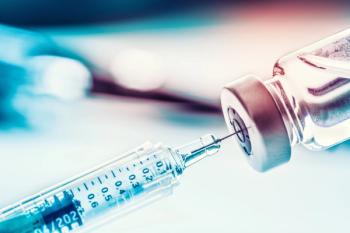
- Applied Clinical Trials-04-01-2016
- Volume 25
- Issue 4
Learning from Failure, Leveraging Biosimulation for Pediatric Drug Development Success
Pediatric trials now feature increased modeling and analytics for safer drug dosing and response.
Historically, most medications given to children had not been evaluated in pediatric clinical trials due to logistical and ethical challenges. Indeed, while children represent about 40% of the world’s population, only 10% of the drugs on the market have been approved for pediatrics.1 Without a proper and approved clinical process, physicians are left with potentially unsafe dosing and therapeutic approaches for children. The result is a continuation of the off-label prescribing.
To address this urgent medical need, both the U.S. Food and Drug Administration (FDA) and European Medicines Agency (EMA) now require pediatric trial plans-the Pediatric Study Plan (PSP) and the Pediatric Investigation Plan (PIP), respectively-as part of the approval process for new drugs. The combination of the Best Pharmaceuticals for Children Act (BPCA) and the Pediatric Research Equity Act (PREA) and these new regulatory requirements are starting to move the pendulum towards safer, more effective medicines for children. During the five-year period between 2007 and 2013, 469 pediatric studies were completed under BPCA and PREA; by August 2014, 526 labeling changes were made.2 Similarly, in the European Union, around 300 products have had label changes approved for safety, efficacy, or dosing for pediatrics since 2007.2
While these requirements have spurred growth in pediatric clinical research, there are still major barriers to successful pediatric drug development. Almost half of the trials conducted in recent years have failed to demonstrate either safety or efficacy. A total of 44 products had failed pediatric drug development trials submitted to the FDA between 2007 and 2014.3 An analysis by Gilbert J. Burckart, PharmD, and his FDA colleagues revealed several common factors that contributed to the widespread failures: suboptimal dosing, differences between adult and pediatric disease processes, and problematic study designs.
In the cases where suboptimal dosing contributed to the failure to show efficacy, there were two frequent issues: not testing a range of doses, and limiting pediatric drug exposure to that which was shown to be efficacious in adults. Testing a range of doses is critical to understanding dose-response
relationships for a drug. Also, if the disease process differs between children and adults, then matching the drug exposure to that observed in adults may not be effective, and ultimately result in clinical trial failure.
An understanding of pediatric disease-its natural progression-is crucial for selecting outcomes for clinical studies, including the primary efficacy endpoint, safety, and biomarkers. Finally, problematic study designs are a significant contributing factor in clinical trial failures. Some of these issues included lack of a control group, stratification, and inadequate assay sensitivity.
A biosimulation framework to support strategic decision-making
First, it’s important to clarify some definitions regarding pediatric age groupings. According to the FDA guidance, neonates are from birth to one month, infants are from one month to less than two years of age, children are from two to 11 years old, and adolescents are from 12 to 18 years old. As pharmacokinetics (PK) and pharmacodynamics (PD) may change between each age range, drug developers may need to develop dosing regimens specific to each subgroup.5
The very nature of human growth and maturation makes the prediction of pharmacokinetics in children especially challenging. Drug disposition in children differs from that of adults in numerous ways. For example, the kinetics of drug absorption may be different in children versus adults due to changes in the expression of intestinal drug transporters and drug metabolizing enzymes during development.4 Likewise, drug distribution changes with age as neonates (birth up to one month) have much higher total body water compared to adults. Finally, organ maturation has a significant effect on drug metabolism and excretion. Children have relatively larger livers, lower glomerular filtration rates, and less renal tubular absorption and excretion compared to adults.6 This distinct physiology means that traditional approaches such as allometry risk greatly over or under predicting drug clearance in pediatric patients, especially those that are less than one year old.7
Because of the special needs of children as well as ethical concerns, there are significant differences in clinical trial protocols for children versus adults. The FDA guidance document discusses these issues at length.5 Some of the major issues in pediatric clinical trials include the following:
- The type of PK study that is possible is often different in adults and children. While rich sampling is often conducted in adults, a sparse sampling procedure is generally preferred for young children to minimize the number and volume of blood draws.
- When studying neonates, sponsors may need to consider gestational as well as postnatal age when determining covariates for a population PK study.
- The formulation of a drug may change between age groups. Young children generally cannot swallow pills and may require liquid formulations.
How can pediatric drug developers satisfy regulatory requirements and maximize drug safety and effectiveness while minimizing children’s exposure to experimental medications? Biosimulation-also known as model-based drug development-includes both empirical “top down” PK/PD modeling and simulation as well as “bottom up” physiologically-based pharmacokinetic (PBPK) models. It leverages prior information from preclinical studies, adult trials, peer-reviewed literature, and pediatric studies of related indications or drug actions. The integration of patient physiology, drug actions, and trial characteristics in models enables sponsors to optimize dosing and trial design. Indeed, in a study of 11 well characterized drugs, PBPK models of virtual subjects (birth to 18 years of age) showed greater accuracy in predicting drug clearance than simple allometry, especially in children less than two years of age.8 The increased certainty in biosimulated outcomes can help sponsors to ensure informative pediatric trials are performed and will gain approvals based on a smaller number of pediatric patients.9
Opportunities during drug development for applying modeling and simulation techniques
As the benefits of biosimulation become increasingly clear, regulatory agencies are also advocating its use to improve the success rate of pediatric trials from current levels.10 Indeed, a 2014 draft guidance from the FDA states that “modeling and simulation using all of the information available should, therefore, be an integral part of all pediatric development programs.”5
At each stage of clinical development, there are specific trigger points and opportunities to apply modeling and simulation techniques to increase the likelihood of success. Submission of the PIP is required by the EMA by the end of Phase I clinical studies. Biosimulation methods should be used to support the dosing rationale stated in the PIP. Population PK and PBPK models based on Phase I data from adults are frequently used to develop a drug model that aids
with pediatric dose selection. Population PK or PBPK models can predict drug exposure across a wide range of ages and weights as well as maturation and organ function. The predicted drug exposure in pediatric patients can then be compared against observed values in adult subjects in Phase I to confirm the models and optimize the safety of treatments. This approach can also be used to develop a sparse sampling strategy that optimizes the assessment of PK parameters while minimizing the number of blood draws and other invasive procedures. Pediatric PBPK and population PK models can be used synergistically during drug development. The former have recently been used to aid in the determination of optimal dose and sampling times for population PK.11 Conversely, the results from population PK models can be used to further optimize pediatric PBPK models.
Another important use for PBPK models in pediatric drug development is evaluating the risk of drug-drug interactions (DDIs). DDIs are a primary threat to the safety and efficacy of clinical practice. Clinically-relevant drug interactions are primarily due to drug-induced alterations in the activity and quantity of metabolic enzymes and transporters. Indeed, DDIs that cause unmanageable, severe adverse effects have led to restrictions in clinical use, and even drug withdrawals from the market.
The magnitude of any DDI depends on the fractional importance of the inhibited metabolic pathway. The pattern of CYP metabolic enzymes that contribute to the elimination of a drug may not necessarily be the same in children compared to adults. Thus, it is difficult to use information about DDIs in adults to inform the likelihood of pediatric DDIs. And, again, there are practical and ethical problems with evaluating DDIs in pediatric clinical studies. A 2012 guidance from the EMA states that PBPK simulations may be used to predict the effects of drug interactions in multiple special populations, including young pediatric patients.12
Use of the Simcyp Pediatric Simulator to simulate DDIs revealed that in certain scenarios, neonates could be more sensitive to a DDI than adults while the opposite might be true in other scenarios involving different CYP enzymes.13 Pediatric PBPK models may help provide information about the risk and magnitude of potential DDIs where there are no existing clinical data.
Pharmacometrics tools are also invaluable in supporting pediatric study plans. The PSP should be submitted to the FDA at the end of the Phase II meeting, following the availability of exposure-response data in adults. To provide guidance on the conduct of pediatric trials, the FDA has articulated a pediatric study decision tree.14 The degree of similarity of disease progression and drug response between adults and children determines which of three major pediatric studies should be undertaken: PK only, PK/PD, PK, or efficacy. Safety studies are required in all of these scenarios.
The regulatory path taken determines the strategy for optimizing dosing. In the case that PK studies alone are used, the sponsor should build a population PK model customized for size and maturation and perform dose simulations that will result in drug concentrations within the range of those observed in adults. Using the PK/PD approach means creating a population PK/PD model that is customized for size and maturation and performing dose simulations that will achieve a target concentration based on the PK/PD relationship. Finally, utilizing a PK and efficacy approach involves building a population PK model and an exposure-response model, and performing simulations to find a dose that will produce a drug concentration that results in an adequate response.
Phase III studies in adults are performed to determine whether there is statistically-significant evidence of clinical efficacy and safety for an investigational drug. At this point, the PIP and PSP should be updated to reflect any new insights. This is also the time to develop final pediatric protocols. Clinical trial simulations using Phase II results can be useful for evaluating probability of success in Phase III.
Two case studies showing successful use of biosimulation for pediatric drug development
Learning from one indication to the next: Eculizumab for atypical hemolytic uremic syndrome
In some cases, information gained developing a drug for one indication can be leveraged to inform its approval for a different indication. PNH (paroxysmal nocturnal hemoglobinuria) is a rare, progressive, and life-threatening disease. It is characterized by rampant destruction of red blood cells (hemolysis) and excessive blood clotting.15 Likewise, aHUS (atypical hemolytic uremic syndrome) is an ultra-rare genetic disease that causes abnormal blood clots to form in small blood vessels throughout the body. The sequelae of aHUS include kidney failure, damage to other organs, and premature death. There were no FDA-approved treatments for this rare disease.
Both aHUS and PNH are caused by chronic, uncontrolled activation of the complement system. During activation of the complement system, the terminal protein C5 is cleaved to C5a and C5b. C5a and C5b have been implicated in causing the terminal complement-mediated events that are characteristic of both aHUS and PNH. Eculizumab is a humanized monoclonal antibody (mAb) that binds C5, thereby inhibiting its cleavage. In 2007, this mAb received approval for treatment of PNH based on evidence of effectiveness from clinical studies.16
To help the sponsor obtain accelerated approval of eculizumab for the treatment of aHUS in both adults and pediatric patients, Certara scientists leveraged previous knowledge gained during its development for PNH. Their starting point was a population PK model that had been previously constructed in adult patients with PNH.17 This model was customized and used to develop optimal dosing strategies for adult and pediatric aHUS patients.
Comparing the case of adults with PNH to pediatric aHUS, it became apparent that children have a different response to intervention and that a different endpoint should be used. The PK/PD relationship in PNH was leveraged to measure the drug’s exposure and inform pediatric dosing for aHUS. Knowledge about eculizumab’s mechanism of action for PNH also suggested that optimal binding to the pharmacological target (C5) should translate into a clinical benefit.
Identification of the therapeutic dosing window for a mAb in pediatric patients with a rare disease involved several steps. First, to ensure patient safety, the upper exposure limit needed to be determined. As a safeguard against toxicity, the upper exposure limit was capped at what had been previously observed in adults. To ensure efficacy, the minimum drug exposure also had to be determined. Using the predicted concentration of the soluble target and the binding characteristics of the mAb to its target, a minimum concentration threshold was set to obtain close to full inhibition of the target. Then, trial simulations using a population PK model were performed to determine which doses would optimize the probability of obtaining the mAb within the window of target engagement. This enabled the dosing recommendations to be determined for pediatric patients of varying weights.17
The clinical program for aHUS involved two Phase II studies and a retrospective observational study. A total of 57 patients with aHUS participated in these studies (35 adult, 22 pediatric patients). Two different biomarkers were used to assess the efficacy of treatment. The proximal biomarker, free C5, showed complete suppression upon treatment with the mAb. Likewise, the mAb caused full inhibition of hemolytic activity (the distal biomarker).17 The primary endpoint indicated that the response to the intervention exceeded 95%. Patients treated with the mAb experienced several benefits including higher improvement in platelet counts and other blood parameters and better kidney function, even eliminating the requirement for dialysis in some patients. Soliris® (eculizumab) received FDA approval to treat aHUS patients in 2011.18
Using PBPK modeling to assess differing drug formulations for pediatric patients
Quetiapine is an atypical antipsychotic drug for the treatment of schizophrenia, bipolar disorder, major depressive disorder, and generalized anxiety disorder. An immediate release (IR) formulation of quetiapine was first approved by the FDA in 1997 and has been extensively studied in adults, children, and adolescents. Regulatory approval for the extended release (XR) formulation was granted for use in adults, with the requirement that pediatric studies must be carried out for children over the age of 12.
Various factors influence the bioavailability of different formulations including the release of the active ingredient, its dissolution and permeability across the GI
tract, as well as intestinal metabolism. Furthermore, alterations in PK in children can be due to differences in absorption and transit rate, organ size, blood flow, tissue composition, and metabolic capacity at various developmental stages. The challenge was to integrate the available in vitro ADME, physiochemical, and clinical data into PBPK models to predict the effects of age and formulation on the PK of quetiapine in young subjects.
Scientists at Certara and AstraZeneca developed PBPK models that predicted, with reasonable accuracy, the effects of CYP3A4 inhibition and induction on the PK of quetiapine, the PK profile of quetiapine IR in both children and adults, and the PK profile of quetiapine XR in adults. These validated models were then used to simulate relative exposure following XR formulation in adolescents (age 13-17) and children (age 10-12). In both groups, the predicted exposure to quetiapine XR followed a similar pattern to the IR formulation, with 300mg XR once-daily being comparable with 150mg IR twice-a-day.19
Conclusion
The high rate of trial failures, increasing regulatory demands, and ethical imperatives all require a reexamination of the current approach to pediatric drug development. Biosimulation is a proven approach that will help optimize trial design and inform the drug label. This approach can support global regulatory strategies that increase the likelihood of success for pediatric drug development programs.
J.F. Marier, PhD, FCP, is a Vice President and Lead Scientist; Trevor N. Johnson, PhD, is a Principal Scientist; Suzanne Minton, PhD, is the Manager of Scientific Communications; all with Certara
References
1. Milne CP and Bruss JB. The economics of pediatric formulation development for off-patent drugs. Clinical Therapeutics. 2008; 30(11):2133-45.
2. Ito, S. Children: Are we doing enough? Clinical Pharmacology and Therapeutics. 2015. doi: 10.1002/cpt.167. [E-pub ahead of print]
3. Momper JD, Mulugeta Y, Burckart GJ. Failed pediatric drug development trials. Clinical Pharmacology and Therapeutics. 2015. doi: 10.1002/cpt.142. [Epub ahead of print]
4. Yaffe SJ and Aranda JV. (2010). Neonatal and pediatric pharmacology: Therapeutic Principles in Practice, 4th edition. Philadelphia, PA: Lippincott Williams & Wilkins.
5. U.S. Food and Drug Administration, “Guidance for Industry: General Clinical Pharmacology Considerations for Pediatric Studies for Drugs and Biological Products,” December 2014,
6. Barrett JS, Della Casa Alberighi O, Läer S, Meibohm B. Physiologically-based pharmacokinetic (PBPK) modeling in children. Clinical Pharmacology and Therapeutics. 2012; 92(1):40-9.
7. Edginton AN, Schmitt W, Voith B, Willmann S. A mechanistic approach for the scaling of clearance in children. Clinical Pharmacokinetics. 2006; 45(7):683-704.
8. Johnson TN, Rostami-Hodjegan A, Tucker GT. Prediction of the clearance of 11 drugs and associated variability in neonates, infants and children. Clinical Pharmacokinetics. 2006; 45(9):931-56.
9. Maharaj AR and Edginton AN. Physiologically based pharmacokinetic modeling and simulation in pediatric drug development. CPT: Pharmacometrics and System Pharmacology. 2014. DOI: 10.1038/psp.2014.45.
10. Gobburu, J. (2010, March). How to Double Success Rate of Pediatric Trials? Presented at the meeting of the American Society of Clinical Pharmacology and Therapeutics, Atlanta, GA.
11. Thai HT, Mazuir F, Cartot-Cotton S, Veyrat-Follet C. Optimizing pharmacokinetic bridging studies in paediatric oncology using physiologically-based pharmacokinetic modelling: application to docetaxel. British Journal of Clinical Pharmacology. 2015. Accepted manuscript DOI 10.1111/bcp.12702.
12. European Medicines Agency, “Guidelines on the Investigation of Drug Interactions,” June 2012, http://www.ema.europa.eu/docs/en_GB/document_library/Scientific_guideline/2012/07/WC500129606.pdf
13. Salem F, Johnson TN, Barter ZE, Leeder JS, Rostami-Hodjegan, A. Age-related Changes in Fractional Elimination Pathways for Drugs: Assessing the Impact of Variable Ontogeny on Metabolic Drug–Drug Interactions. Journal of Clinical Pharmacology. 2013.
14. U.S. Food and Drug Administration, “Guidance for Industry: Exposure-response Relationships – Study Design, Data Analysis, and Regulatory Applications,” April 2003, http://www.fda.gov/downloads/Drugs/GuidanceComplianceRegulatoryInformation/Guidances/ucm072109.pdf
15. Lathia C, Kassir N, Mouksassi MS, Jayaraman B, Marier JF, Bedrosian CL. Modeling and Simulations of Eculizumab in Paroxysmal Nocturnal Hemoglobinuria (PNH) and Atypical Hemolytic Uremic Syndrome (aHUS) Patients: Learning From One Indication to the Next. Clinical Pharmacology and Therapeutics. 2014, PII-107; 93(1): S97.
16. U.S. Food and Drug Administration. (2007) FDA Approves First-of-its-Kind Drug to Treat Rare Blood Disorder [Press release]. Retrieved from http://www.fda.gov/NewsEvents/Newsroom/PressAnnouncements/2007/ucm108869.htm
17. Lathia C, Kassir N, Mouksassi MS, Jayaraman B, Marier JF, Bedrosian CL. Population PK/PD Modeling of Eculizumab and Free Complement Component Protein C5 in Pediatric and Adult Patients with Atypical Hemolytic Uremic Syndrome (aHUS). Clinical Pharmacology and Therapeutics. 2014, PII-108; 93(1): S97.
18. U.S. Food and Drug Administration. (2011) FDA approves Soliris for rare pediatric blood disorder [Press release]. Retrieved from http://www.fda.gov/NewsEvents/Newsroom/PressAnnouncements/ucm272990.htm
19. Johnson TN, Zhou D, Bui KH. Development of physiologically-based pharmacokinetic model to evaluate the relative systemic exposure to quetiapine after administration of IR and XR formulations to adults, children and adolescents. Biopharmaceutics and Drug Disposition. 2014; 35(6):341-52.
Articles in this issue
over 9 years ago
EMA Releases New Advice on Human Trials for Cancer Drugsover 9 years ago
Number of Countries in Phase III Studies Remains Steadyover 9 years ago
Will EMA Rules Calm the Disclosure Debate?over 9 years ago
Acknowledging Cycle Time Impact from Protocol Amendmentsover 9 years ago
The Promise of Precision Medicineover 9 years ago
Value-Based Planning & Drug Development Productivityover 9 years ago
Overcoming Early Phase Oncology Challengesover 9 years ago
Imagining the Impossible: Immunity to Cancerover 9 years ago
Applied Clinical Trials, April/May 2016 Issue (PDF)Newsletter
Stay current in clinical research with Applied Clinical Trials, providing expert insights, regulatory updates, and practical strategies for successful clinical trial design and execution.






.png)



.png)



.png)
.png)
